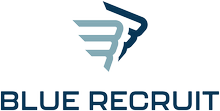Strategies to Attract and Retain Top Talent in Today’s Market
1. Create an Employee-Centric, Engaging Value Proposition
- Know your employee base: Mercer highlights that 96% of executives view the market as “employee-centric,” while 70% of HR professionals anticipate elevated turnover.
- Tailor your approach: Use data-driven insights into compensation, career development, well-being, inclusion, and culture to shape an offer that truly resonates.
2. Understand Why People Leave—and Track It
- Measure retention drivers: Mercer recommends tracking turnover—especially among critical segments—at key milestones like 30, 60, 90 days, 6 months, and a year.
- Prioritize metrics that matter: Focus on engagement, performance, tenure, and DEI outcomes. This enables pinpointing where retention efforts are falling short.
3. Make Talent Feel Special
- Create emotional connection: As summarized by HBR, making people feel unique and valued is the real secret to retention.
- How to do it: Welcome and act on their ideas, invest in their development, and offer sincere praise—even small recognitions go a long way.
4. Build a Career Ecosystem (Not Just a Job)
- Support growth: Offer clear career paths, learning resources, and internal mobility—Mercer finds that 81% of companies now prioritize internal moves over external hiring.
- Align role and progression: Use career frameworks to tie roles to competencies and rewards, helping employees see how their work connects to the business.
5. Be Flexible and Embrace Modern Work Models
- Flexibility is table stakes: Mercer reports that although only 33% of HR leaders call it a top priority, 76% of workers say flexibility strongly impacts their job decisions .
- Go beyond remote work: Consider job sharing, nontraditional schedules, and location-independent career paths.
6. Elevate Leadership as a Strategic Tool
- Managers shape retention: Weak leadership remains a prime reason for attrition—but only 36% of companies offer structured leadership development .
- Train them well: Develop managers to deliver regular feedback, emotional support, autonomy, and alignment with employee goals.
7. Embed Purpose and Inclusion
- Purpose matters: Aligning daily work with a compelling, authentic purpose boosts retention. Employees want to feel their work is meaningful.
- Champion diversity and inclusion: For instance, supporting women in tech through mentorship, inclusive cultures, and recruiting from diverse pools builds loyalty and performance.
8. Tap Internal Talent—Hidden and High-Potential
- Look inside first: A recent analysis urges companies to uncover latent talent through internal upskilling, mentoring, skills matrices, and job rotations.
- Broaden your talent pool: Include career changers, returners, and new entrants—not just traditional candidates.
9. Leverage Smart Compensation—and Guard Burnout
- Use retention incentives smartly: “Golden handcuffs” like deferred bonuses or equity can discourage departures—but risk pushing people into burnout if expectations aren’t managed.
- Balance is key: Offer rewards, but avoid stress through overload and unclear expectations.
10. Reinforce Culture, Autonomy, and Well-Being
- Foster autonomy and innovation: Giving employees ownership over their work builds trust, engagement, and loyalty.
- Support well-being: Flexible arrangements, mental health programs, and mindfulness initiatives improve retention—some organizations see up to 4× ROI on such investments.
- Cultivate inclusive culture: Celebrate diversity, listening, mutual respect, and shared ownership to strengthen long-term commitment.
Summary Table: Key Principles at a Glance
| Pillar | Action Steps |
|---|---|
| Employee-Centric Strategy | Analyze engagement, turnover, compensation, and DEI data |
| Track Why People Leave | Monitor turnover at defined intervals; tailor metrics to business segments |
| Make People Feel Special | Listen to ideas, support growth, praise contributions |
| Grow Within | Promote from within, offer internal pathways, enable continuous learning |
| Flexibility | Implement hybrid, job-sharing, and non-traditional work practices |
| Leadership Quality | Develop managers to engage, empower, and connect with employees |
| Purpose & Inclusion | Embed shared purpose, build inclusive cultures, support underrepresented groups |
| Internal Talent | Use rotation, mentoring, and skills mapping to unlock hidden potential |
| Smart Compensation | Offer incentives guardedly; balance rewards with healthy work norms |
| Well-Being & Autonomy | Provide support programs, autonomy, and psychological safety |
Final Thoughts
Attracting and keeping top talent today demands more than money. Forward-looking companies excel by truly understanding their teams, enabling growth, modeling empathy, and designing adaptive ecosystems—not just jobs. When employees feel valued, grow, and belong, they stay—and they contribute much more.


